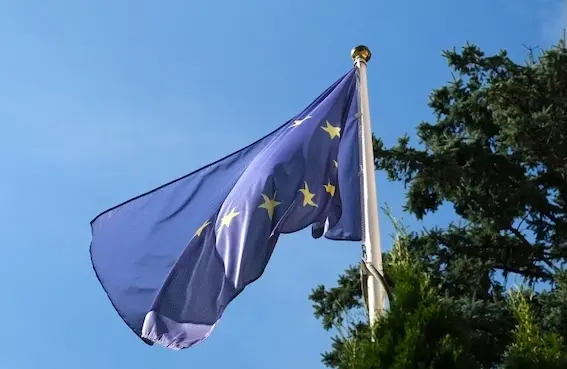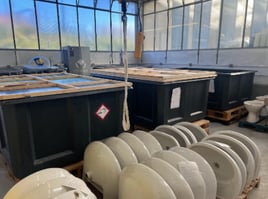Carbon emission reduction projects can be grouped into two main categories: carbon removal projects, which aim to capture and remove carbon already present in the atmosphere, and avoidance projects, which aim to prevent carbon from being released into the atmosphere and thereby avoid future emissions.
Through the sequestration and/or avoidance of carbon emissions, these projects can generate carbon credits (1 carbon credit corresponds to 1 tonne of CO₂ absorbed or reduced) and are traded on the Voluntary Carbon Market.
To help you better understand how carbon emission reduction projects are categorized and select the one best suited to your company, this article provides an overview of the different project typologies available on the voluntary carbon market.
I. Carbon Removal Projects at ClimateSeed
Afforestation, Reforestation, Revegetation (ARR)
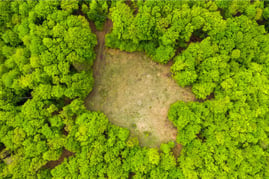
These three types of projects are essential for mitigating climate change, contributing both to the removal of carbon dioxide and the restoration of ecosystems:
- Afforestation: planting trees on land that has never been forested.
- Reforestation: planting trees in areas that have been deforested.
- Revegetation: restoring vegetation cover in regions where it has disappeared.
Blue Carbon

Blue carbon projects refer to the restoration and conservation of wetland areas (WRC) aimed at protecting, rehabilitating, and conserving ecosystems such as marshes, swamps, peatlands, and other oceanic and coastal ecosystems.
These projects focus on restoring hydrological patterns, preserving biodiversity, and improving the ecosystem services provided by wetlands.
Regenerative Agriculture and Farmland Management
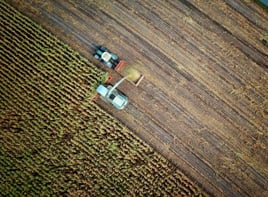
Agricultural projects aim to remove carbon from the atmosphere and store it in the soil. Plants and crops are part of the carbon cycle, as they absorb CO₂ from the air during photosynthesis. When they decompose, part of the CO₂ is stored in the soil and another part is released into the atmosphere.
Regenerative agriculture seeks to restore soil health and quality, thereby improving its carbon-storage potential.
By implementing agricultural management practices such as no-till farming and cover cropping, these projects can slow the rate at which soil carbon is lost and turn soils into more effective carbon sinks.
Hybrid and Engineered Solutions
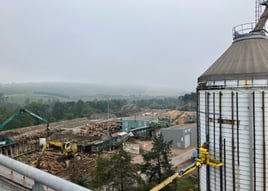
Biochar, Enhanced Rock Weathering (ERW), and Direct Air Capture and Storage (DACS) are innovative solutions that use human-made technologies to capture and store GHG emissions from the atmosphere.
To deepen your understanding of carbon sequestration projects, we invite you to read our guidebook: Carbon Removal Projects: A Must-Know Guide for Buyers.
II. Carbon Avoidance Projects at ClimateSeed
Improved Forest Management and REDD+
Sustainable forest and land-use management projects encompass initiatives focused on the sustainable management and use of forests and land resources.
These projects involve activities such as forest management planning, timber production, agroforestry practices, and the optimization of land use.
Renewable Energy
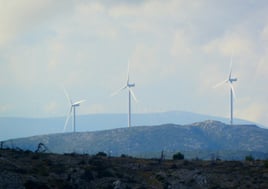
Renewable energy comes from natural resources that can renew themselves faster than they are consumed. This energy alternative helps limit global greenhouse gas emissions because renewable energy is infinite, does not run out, and does not generate greenhouse gas emissions.
Household and Community Devices

Household and community device projects are centered around delivering benefits to local communities, valuing their knowledge, and involving them in decision-making processes.
Projects such as improved cookstoves, clean drinking water access, and biodigesters directly reduce emissions associated with domestic and community activities.
These initiatives not only reduce carbon emissions but also provide significant social benefits by supporting local populations and involving them in key decisions.
Waste Management
Waste management projects focus on how waste is handled in order to minimize its impact on the environment and human health. Rather than treating waste as the last step of the production chain, these projects use waste to generate energy, reduce pollution, and lower carbon emissions.
These projects adopt a circular approach of climate solutions.
Transportation
The transportation sector is one of the main contributors to greenhouse gas emissions, primarily due to the combustion of fossil fuels for vehicles, ships, trains, and planes.
In a rapidly evolving world, these projects promote clean alternatives and infrastructure optimization, contributing to sustainable transport solutions in both urban and rural areas.
To learn more about carbon avoidance projects, you can download our free guidebook: Carbon Avoidance Projects: A Must-Known Guide for Buyers.
III. How ClimateSeed Selects Climate Contribution Projects
Each project is selected and assessed by our team of experts through a rigorous process based on its climate impact as well as its potential social and environmental benefits.
- Qualification and initial screening: identification of carbon projects according to several criterias (project typologies, methodologies, and geographical areas).
- In-depth assessment of the project & project leader: individual analysis of each project based on our internal capabilities, through independent due diligence and risk assessment.
- Continuous monitoring & commitment of project leaders: active management and monitoring of our project portfolio.
- Creation of tailor-made portfolios: collaboration with an expert to build a portfolio aligned with your climate strategy, combining key project attributes.
IV. How to Choose the Climate Contribution Project Best Suited for your Company
To choose the ideal climate contribution project for your company, it is crucial to consider several quality criteria. Ensure that the project is certified by internationally recognized standards (Gold Standard, VCS, Plan Vivo, Climate Action Reserve), guaranteeing transparent validation and registration of carbon credits and avoiding double counting.
Emission reductions must be real, measurable, and proven through recognized tools and compared to a credible baseline. The project must demonstrate additionality, proving that the carbon credits deliver added value that would not exist without this financial support.
All emission reductions and avoidance must be independently verified to ensure reliability, and carbon credits must be unique, representing 1 tonne of CO₂, and be publicly registered. The CO2e reduction permanence is essential, with measures in place to minimize reversal risks and compensate for any setbacks.
Projects should also offer co-benefits, such as biodiversity protection and support for local communities, contributing to the UN Sustainable Development Goals. Finally, transparency is key: ensure that price margins are clear and that the carbon credits you purchase are not resold but retired to guarantee lasting climate action.
For more details, please consult our dedicated article.
V. What is the Impact of Climate Contribution Projects?
Climate contribution projects, also known as climate contributions, enable companies to offset their greenhouse gas emissions by investing in initiatives that reduce and/or remove carbon from the atmosphere, such as reforestation, renewable energy, or carbon capture technologies.
By investing in carbon credits, a company has the opportunity to enhance its brand image by positioning itself as responsible and committed to fighting climate change. This can also attract customers and investors who value environmental responsibility.
For the planet, these projects contribute to reducing global CO₂ emissions, promoting biodiversity, and supporting the sustainable development of local communities.
Thus, the benefits for buyers include not only a comprehensive climate strategy and a stronger reputation but also economic advantages and significant positive social and environmental impacts.
Conclusion
All projects available on the voluntary carbon market aim either to remove or avoid greenhouse gas (GHG) emissions. However, beyond carbon goals, these initiatives deliver strong environmental and social impacts by directly contributing to the UN Sustainable Development Goals (SDGs).
Before selecting projects, it is essential to establish a clear climate strategy to maximize your climate impact by supporting initiatives that align with your activities and sustainability commitments.
By adopting this approach, you will not only maximize your climate impact but also demonstrate the maturity of your commitments and strengthen your credibility with stakeholders.
Why Choose ClimateSeed for your Climate Contribution Project?
ClimateSeed offers a digital platform that connects trusted project developers with reputable contributors and manages the operational process of carbon credit transactions.
Drawing on its financial expertise and the requirements of a leading financial institution, ClimateSeed has developed an end-to-end risk mitigation process. As a result, to date, none of the projects offered by ClimateSeed has been subject to major carbon-related controversy.
Contact us to discover our portfolio of more than 45 projects in over 25 locations.
Share this
You May Also Like
These Related Stories
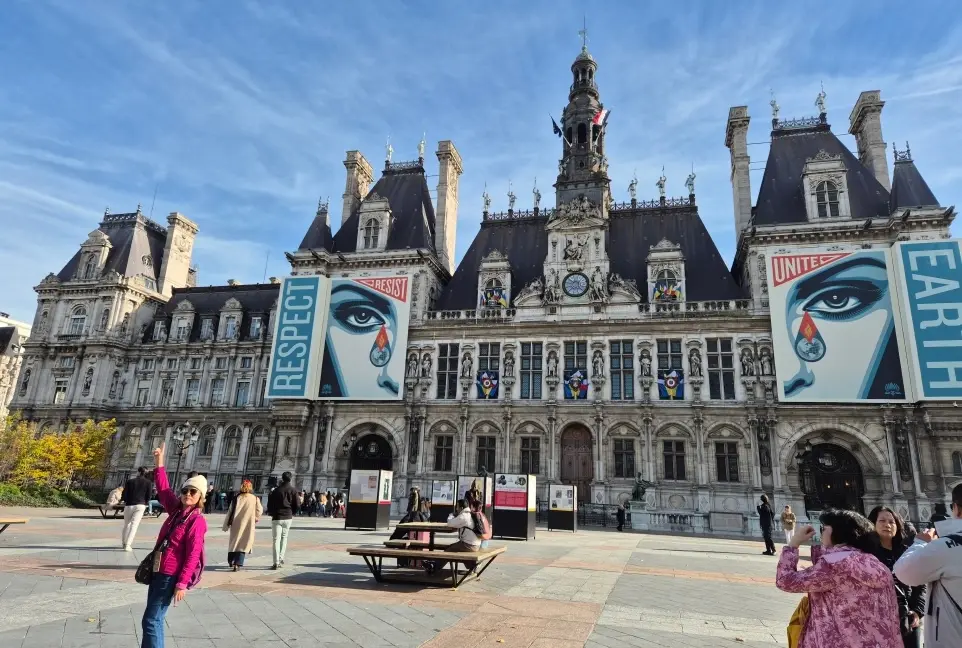
What to remember from the exhibition From Paris to Belém: 10 Years of Global Climate Action

Your guide to never getting the CDP form wrong again
